This post shows students and new users how to Backup and restore important files and folders in Windows 11
To back up your files in Windows 11, you simply make copies and store them somewhere safe. If you lose the original files on the computer, you can restore the missing files from the backed-up location.
One thing you can also do with Windows 11 is use its built-in Backup and restore tool to protect your important files.
Learning to back up and restore important files and folders in Windows 11 is crucial for protecting your data in case of unexpected events, such as hardware failures, malware attacks, or accidental deletion. By backing up your files, you can create copies of them and store them somewhere safe to restore them if the original files are lost or damaged.
This can save you much time and effort in recovering or recreating lost data from scratch. Having backups of your important files is always a good practice to prevent data loss.
Follow the steps below to get started backing up your files in Windows 11.
How to Back up Your Files
The easiest way to back up your files is to let Windows manage the Backup process. Several backup applications are available, but Windows 11 has a built-in tool.
Alternatively, you can manually copy the file to a backup location instead of using an application. However, allowing Windows to back up your important files automatically might be your best option.
What to Backup
Your priority should be to back up important files and those that would be difficult to replace. Your files, such as emails, financial documents, family photos, and others, are irreplaceable.
Other less important data would be your profile, installed software, and system settings. You can replace them there, but you’ll have to spend time restoring things to their original state.
Backup files to OneDrive online
There are many ways to back up Windows. However, the easiest might be setting up and backing up to OneDrive online Storage. OneDrive lets you save and access your files and photos from any device, anywhere.
You will need a Microsoft account to set up OneDrive on your machine. Simply go to the link below to create a Microsoft Account.
Sign in – Microsoft OneDrive (live.com)
You can sign up for free and are given 5GB of free storage space. You can always upgrade to larger sizes when you need more storage space.
Once you’re signed up and ready, continue below to set up Windows backup.
Windows 11 has a centralized location for the majority of its settings. Everything can be done, from system configurations to creating new users and updating Windows from its System Settings pane.
To get to System Settings, you can use the Windows key + I shortcut or click on Start ==> Settings, as shown in the image below:
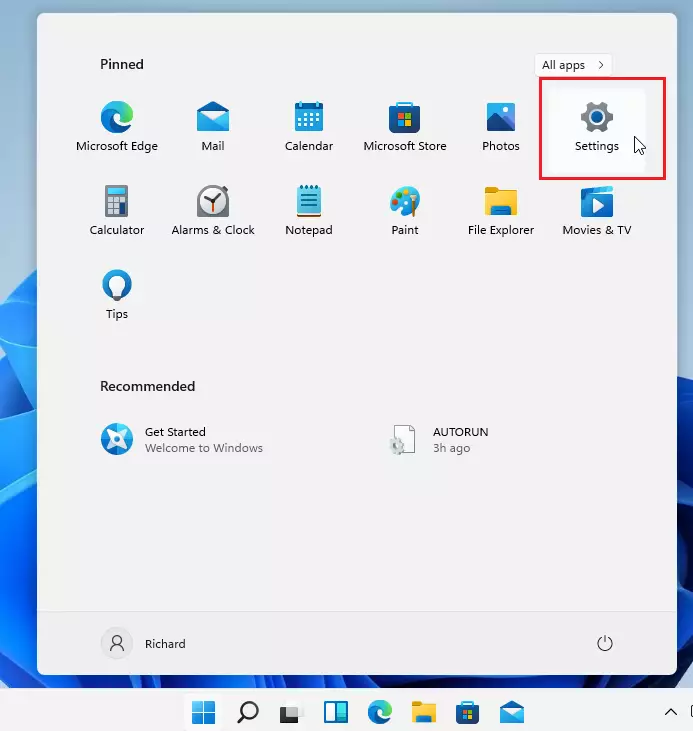
Alternatively, you can use the search box on the taskbar to search for Settings. Then select to open it.
Windows Settings pane should look similar to the image below. In Windows Settings, click System, then select Storage on the right pane of your screen, as shown in the image below.
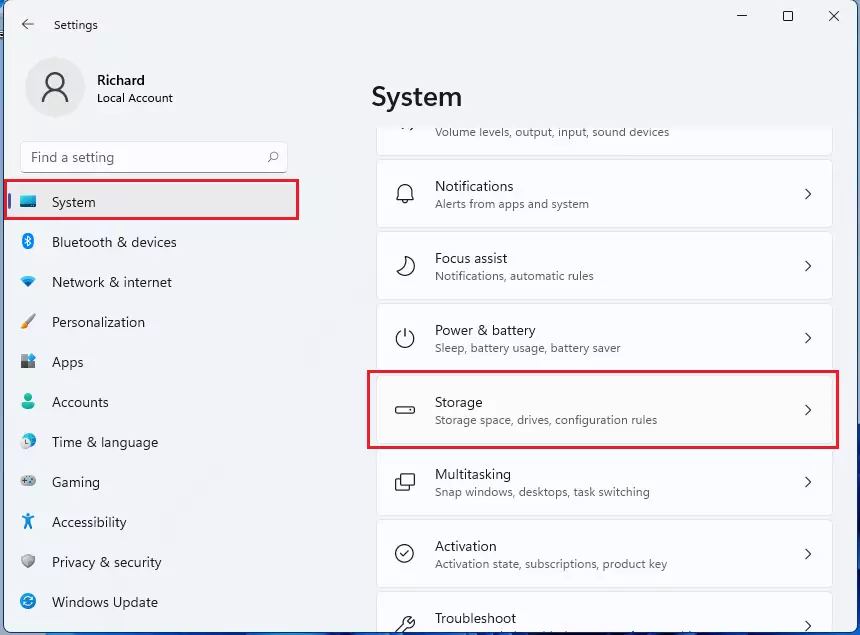
On the System storage settings page, click on Advanced storage settings.
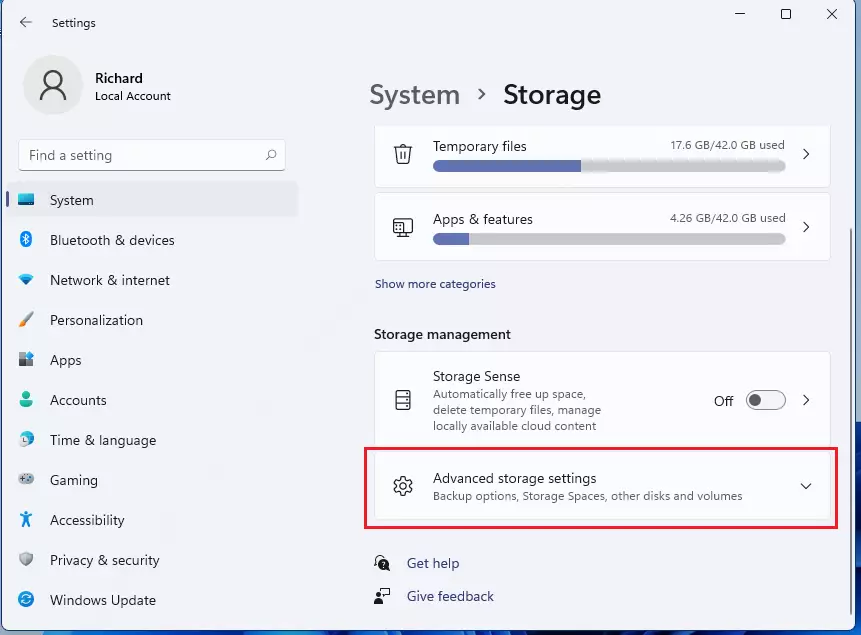
Under Advanced storage settings, select Backup options.
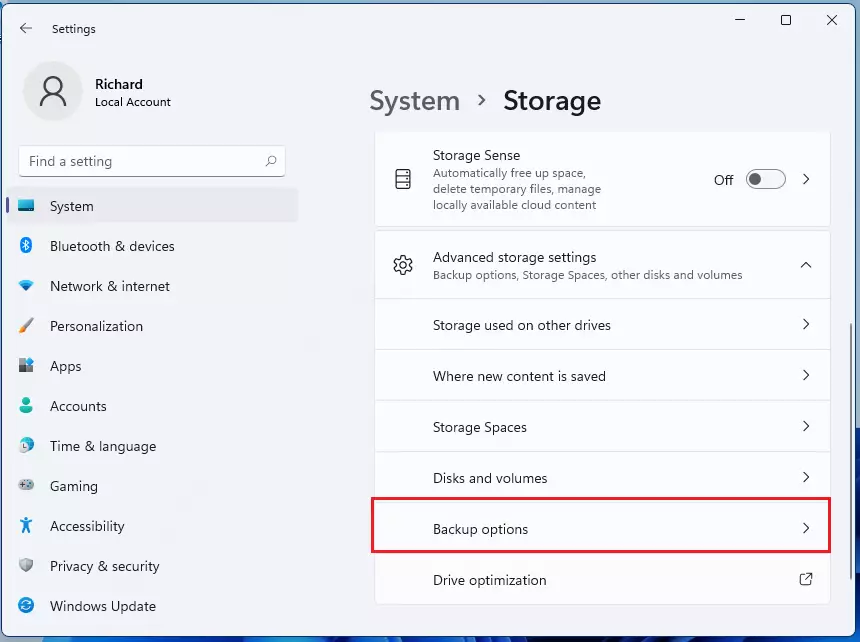
On the Backup options settings page, choose to back up files to OneDrive. Then click on the link that reads “Sign in to OneDrive.”
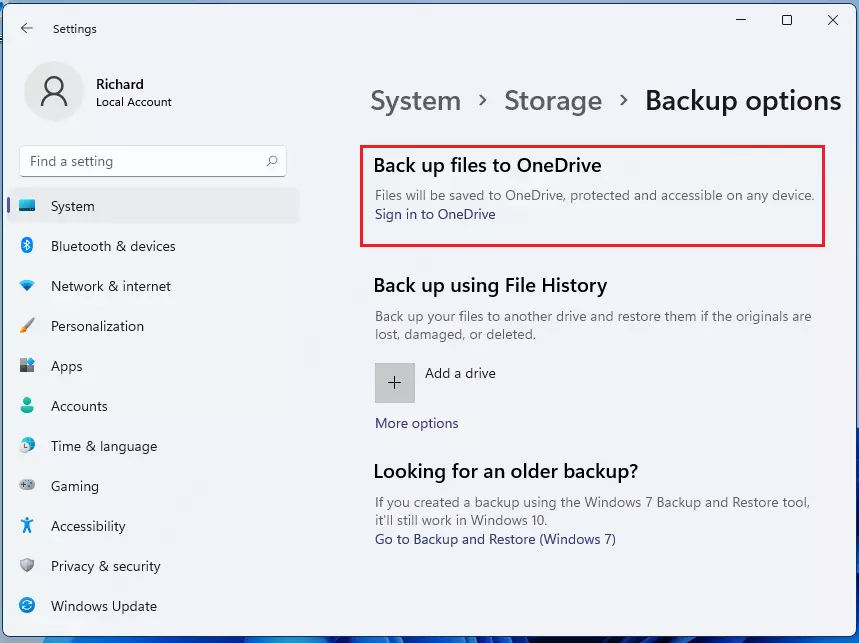
You’ll be prompted to enter your OneDrive account email address and password to sign in.
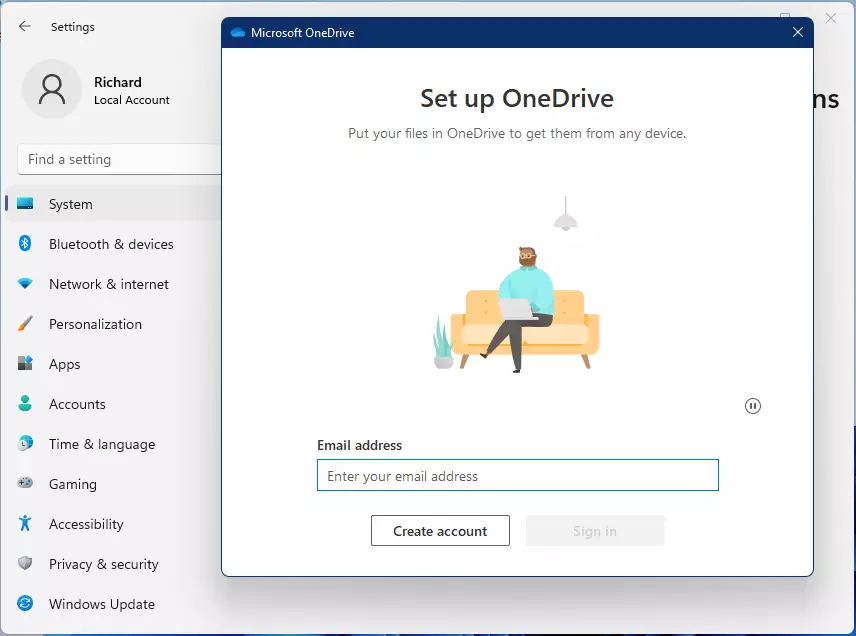
It would be best to continue with the setup wizard after logging into your OneDrive account correctly.
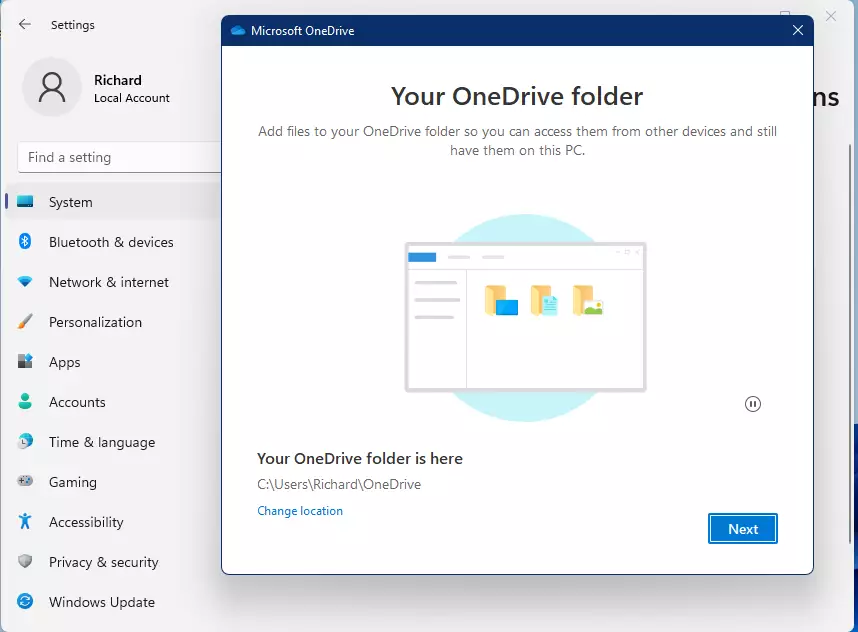
When you finish the setup wizard, you should see a similar screen below telling you that OneDrive is ready to use and the setup is complete.
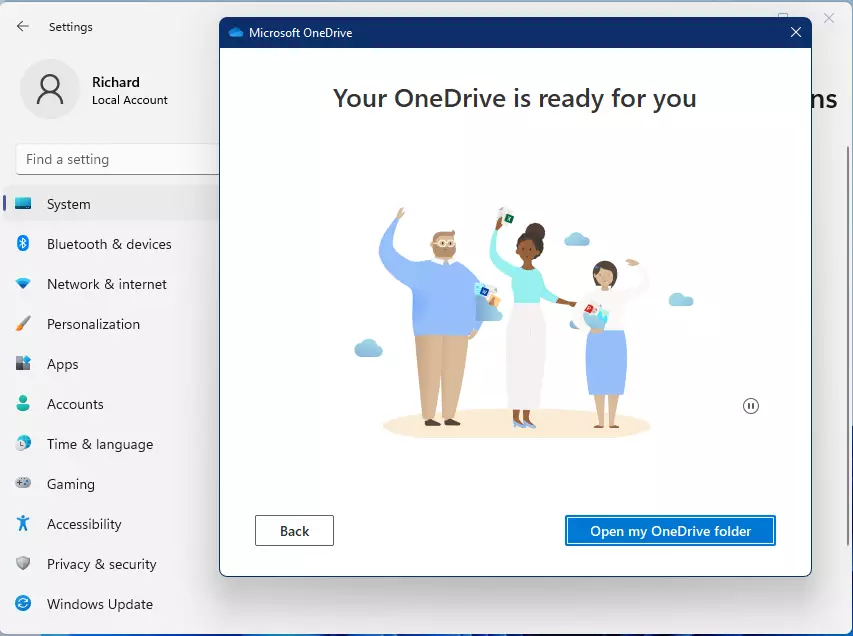
Backup Windows 11 to External Drives
You can back up Windows to external drives and restore them if the original is lost, damaged, or deleted. Insert or connect the external drive to your computer.
In Windows Settings –> System –> Storage –> Advanced Backup options, select Back up using File History instead of going to OneDrive, as mentioned above.
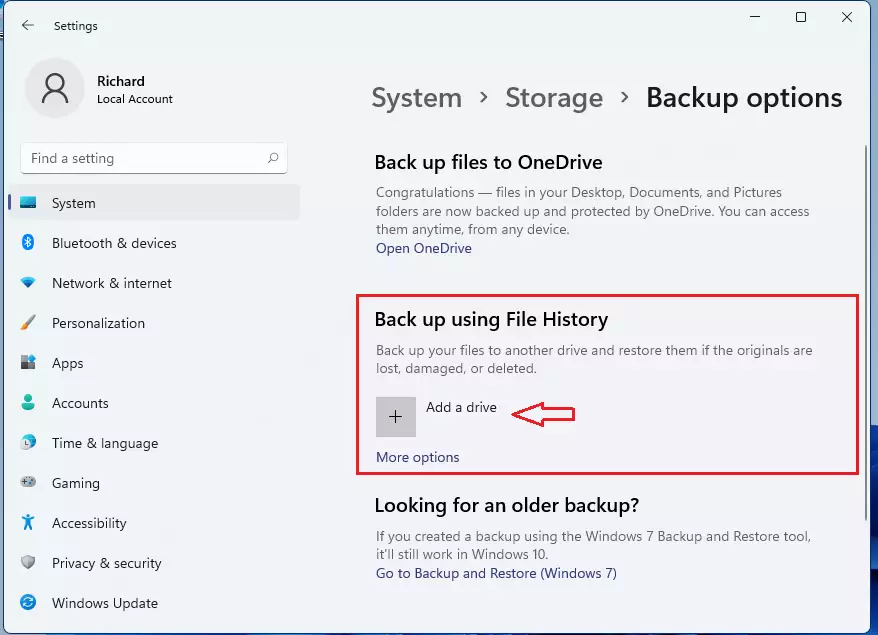
Once you click the Add a Drive button, you’ll be prompted to select the external drive to back up to. Choose the drive you have connected to Windows.
When you select a drive, you’re set. Every hour, Windows backs up everything in your user folder (C: \Users\username).
To change which files get backed up or how often backups happen, go to More Options.
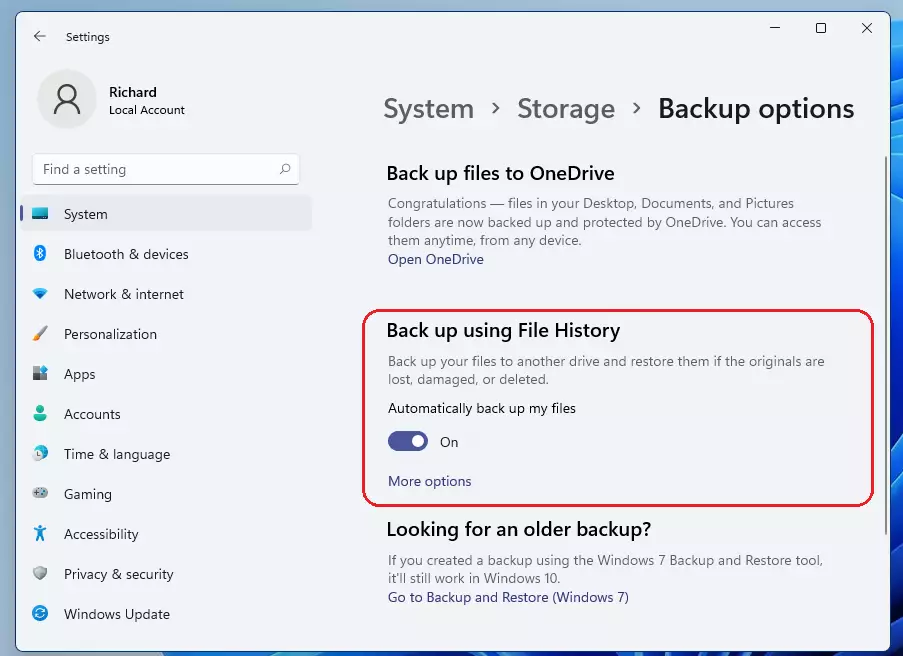
More options let you set up how and when files are backed up.
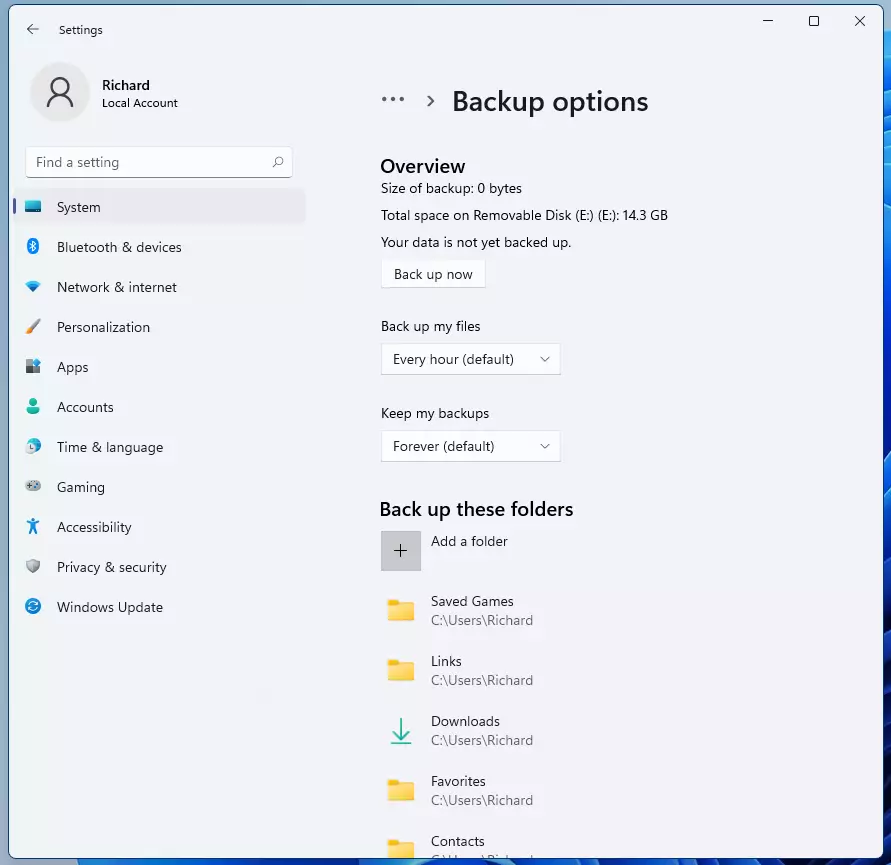
When you’re done, save and exit.
Conclusion:
- Backing up your files in Windows 11 is crucial for data protection.
- Utilize built-in tools like OneDrive and File History for automated backup processes.
- Prioritize important files such as documents, photos, and critical data for backup.
- Regular backups can save time and effort in recovering lost files.
- Always ensure you have a reliable method for restoring your backups when needed.
- Stay proactive about data safety to prevent potential data loss in the future.

Leave a Reply